Immediately after World War II, a pressing need for transport aircraft arose. The quick solution was to convert existing military bombers and transports for the role. This led to the sideways seating on board the Avro Lancastrian, an adaption of the famous Avro Lancaster bomber.
The first conversions took place in Canada from 1943, with nine produced for Trans-Canada Airlines. BOAC took delivery of 30 of them from 1945, with a demonstration flight taking three days and 14 hours to get from England to New Zealand. Very fast for the time!
What Does An Avro Lancastrian Look Like?
Perhaps unsurprisingly, the Lancastrian looks almost exactly like a Lancaster with its armament removed and passenger windows added. With its four engines and twin tails, it’s hard to mistake it for anything else.
- A BOAC Avro Lancastrian
- Here’s one for Qantas Empire Airways
With the advent of proper transport aircraft entering service, the Lancastrian was quickly retired, with final services in 1960. However it did have some firsts, such as a British South American Airways (BSAA) example operating the first scheduled service from London Heathrow Airport.
The BOAC Seating Plan
For long flights with BOAC, seating was provided for nine passengers and everyone sat right next to each other. Since you faced the windows, you were probably guaranteed a pretty decent view.
- Seating Plan, circa 1946
There are also three berths, located directly above the seats and the nine seats below could also be converted to three additional berths. While that provided people with a place to sleep, whether they did or not is another matter as the plane was likely very noisy inside.
Sitting Sideways In The Lancastrian Cabin
My first thought when seeing these pictures is that it reminded me of being on the London Underground. Tube trains have sideways seating like this and while it’s fine for a quick ride, I can’t imagine sitting for hours on end like this.
- Not for the claustrophobic, that’s for sure!
- Its definitely cosy and cramped
- It looks like disposable paper under the feet
The colourised picture really makes things look incredibly gloomy. However, needs must, and I am sure those who absolutely had to be places quickly weren’t too concerned about the austere interiors. I imagine people ate food off their laps, since there are no tables to eat from.
The Other Avro Lancastrian Cabin
Of course, other airlines operated the aircraft with a more conventional layout. BSAA aircraft featured seating for 13 passengers, all facing forward as you can see below. There were 18 built in this configuration.
- Inside a BSAA Lancastrian – perhaps a tad better?
Interestingly, Alitalia operated the Avro Lancastrian too. It had the honour of operating their first intercontinental flight in March 1948 from Rome to Buenos Aires with stops in Dakar, Natal, Rio de Janeiro and Sao Paulo. All of this took a speedy 36 hours!
Overall Thoughts
My guess is that the requirement for sleeping berths is what influenced the BOAC design with everyone seated sideways facing the windows. Hopefully flights weren’t too full, as you could literally be touching another person for hours on end.
I’m glad that Austerity Airliners on Twitter tweeted about this. Without me seeing that, I would not have had the inspiration to write up this article. It’s always fun learning something new!
What do you think of the sideways seating on the Avro Lancastrian? Is it something you would be okay with, or not a chance? Thank you for reading and if you have any comments or questions, please let me know.
To never miss a post, follow me on Facebook, Twitter and Instagram.
All my flight and lounge reviews are indexed here so check them out!
Colour interior images via British Airways and colourised by Benoit Vienne.
BOAC Avro Lancastrian via Bureau of Aircraft Accidents Archives.
Qantas Avro Lancastrian from Qantas via Business Class.
Cabin with no people via Science and Society Picture Library Prints.
Black and white cabin with people via Science and Society Picture Library Prints.
BSAA interior image via Heathrow Airports Limited.

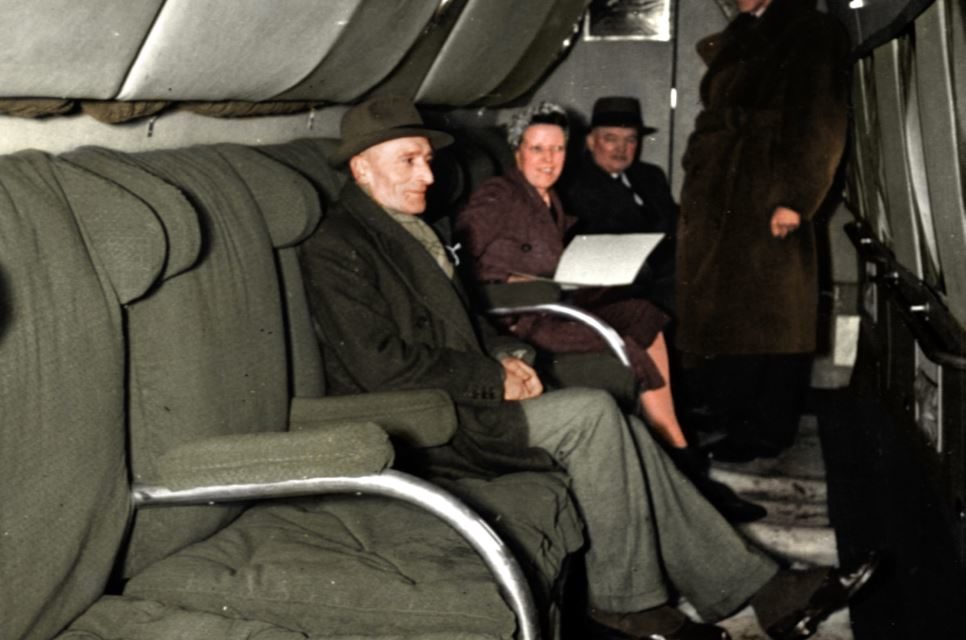
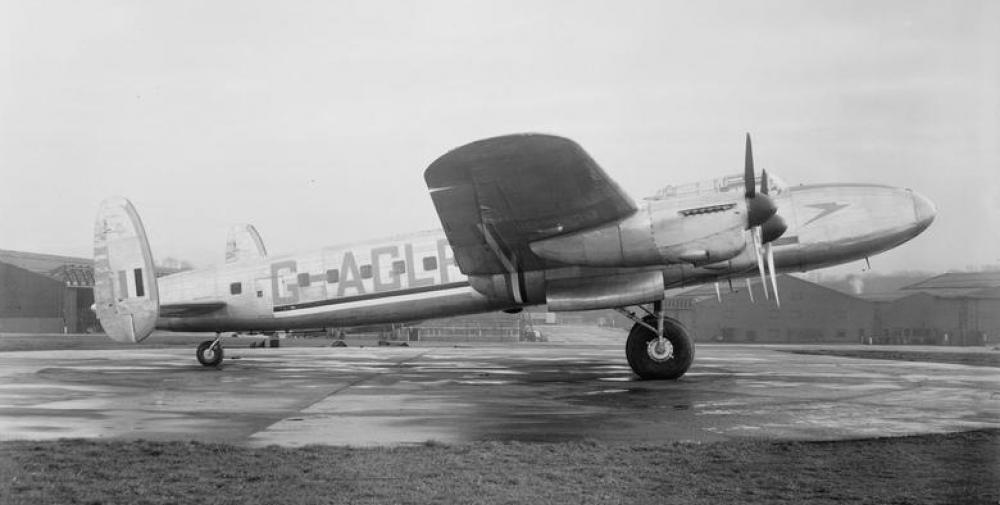
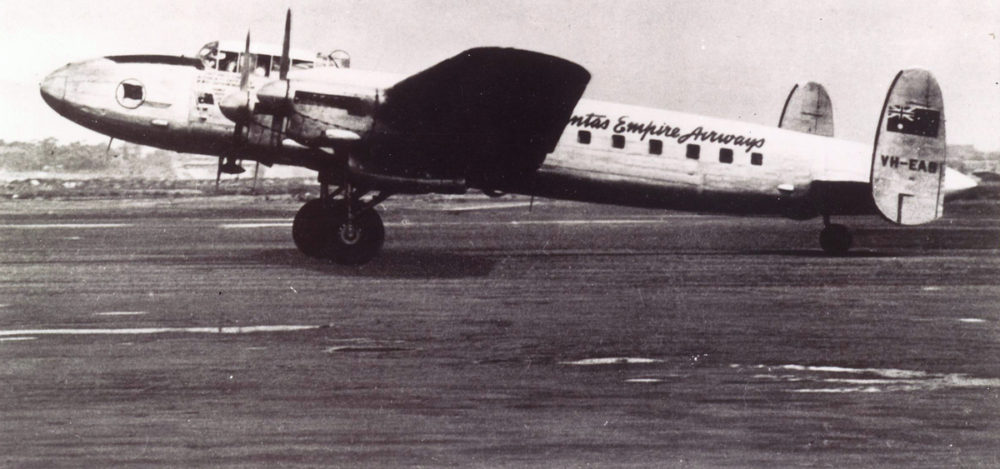
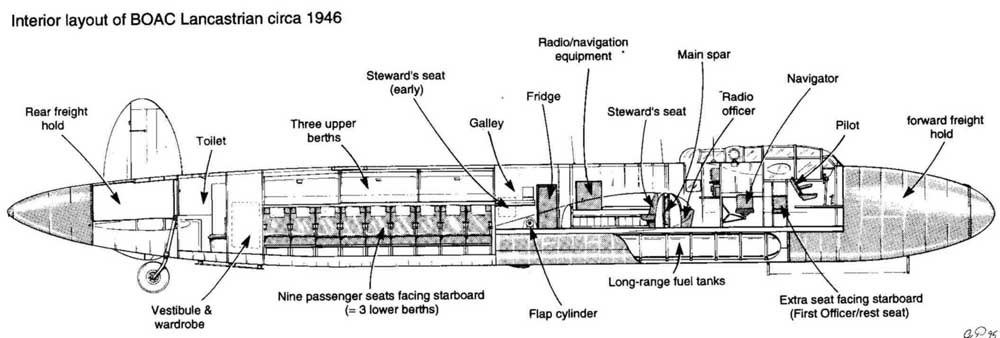
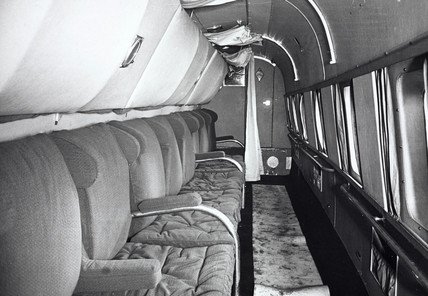
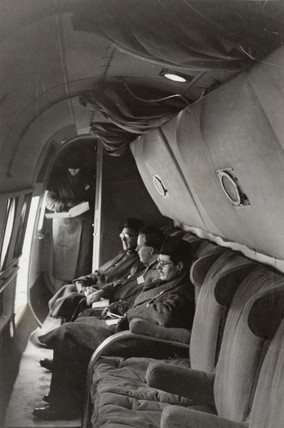
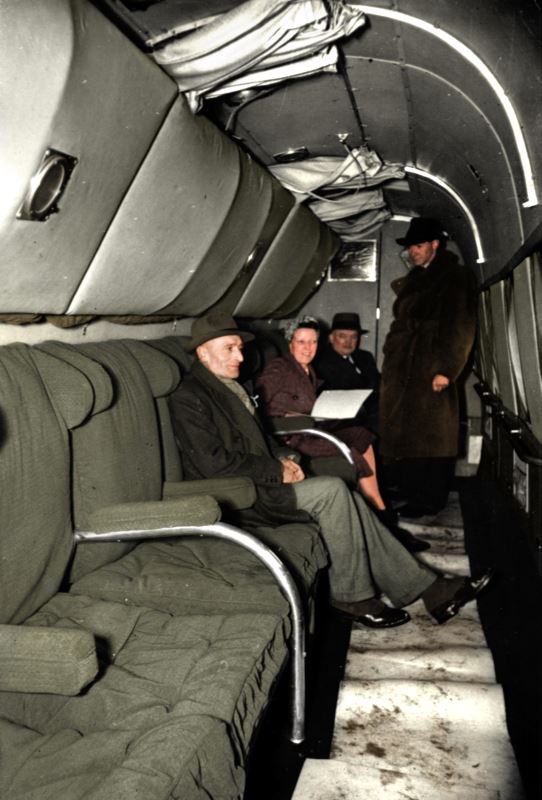
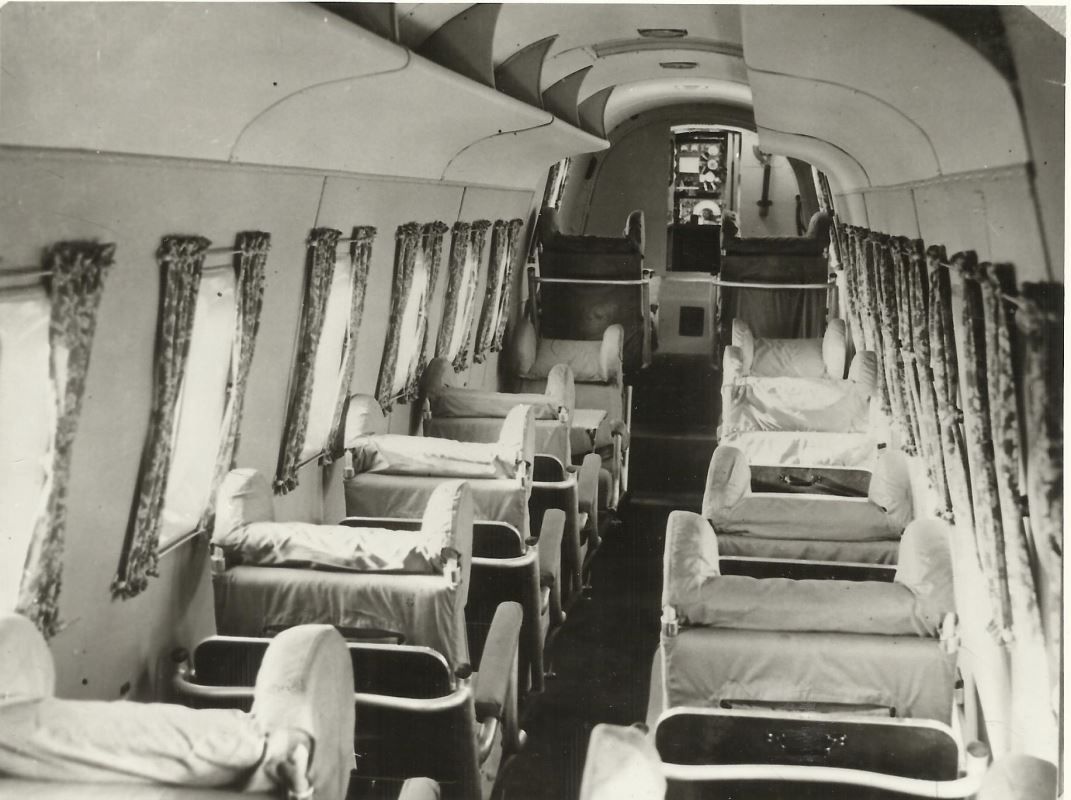
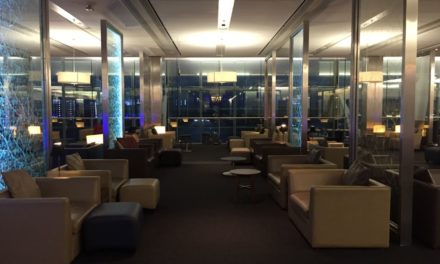


I was a passenger in a Lancastrian. Mid 1950s, Army arranged BOAC flight for my mother and I to join my father in Singapore from Uk. May have been only for part of the journey which had an overnight stop in India. That was in a large tent on an army base!! My memories, sweet to suck on take off and cotton wool pushed in my ears. I have always known that I flew in a one time bomber.
Really happy to hear from someone who has actually flown on board a Lancastrian! Sweets and cotton wool, definitely wouldn’t be having any of that these days. Nice that you got to experience that, it’s a rare thing nowadays! Thanks for taking the time to share your memories, I love hearing these kinds of things 🙂
No worse than Ryanair
Hahahaha!
Considering that directly above the seat is a fold down berth to sleep in – not bad!
Sure wouldn’t have been a silent and serene flight, but still, it was the fastest way to get somewhere at the time!
The other conversion from the Lancaster was the Avro York. I was stationed at Basingbourn with a York tranport.
Thank you for that information. It’s good to know a little more about some aircraft of the past. It must have been an interesting experience based there on the Yorks. Thanks for the comment!
If there were only 6 berths for the 9 passengers, what were the arrangements for the 3 who did not get a berth?
I’m assuming they would only sell six tickets in those cases, as there’s really nowhere else to put the extra people. That’s my guess anyway!
I would, just to say I did. I’m like that.
Hahaha I’m the same – I so would 🙂
Looks more comfy than most of today’s coach seats! 😀
Hahahaha! You make a good point! 🙂